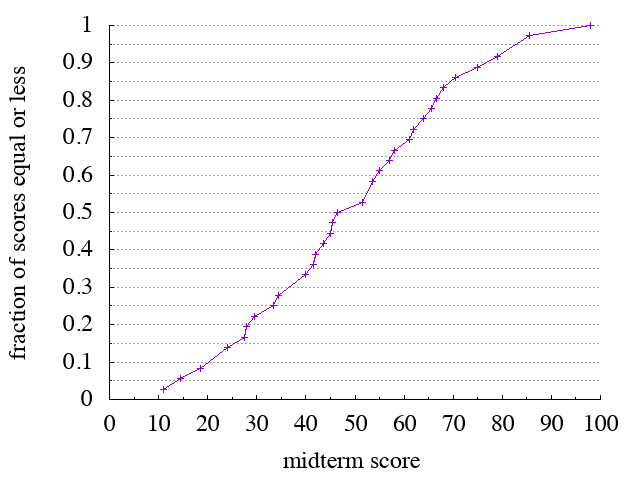Below are the class's exam scores on the Midterm, depicted as a cumulative distribution function (or CDF). CDFs contain a lot of information (all of the information about a distribution in fact), but they take practice to learn to read. Let's use this opportunity to practice.
A CDF, by definition, maps a given x value (in this case a score) to a fraction. That fraction represents the fraction of scores in the distribution that are equal to or lower than the given x value. (Technically, what's depicted is not a true CDF because for discrete data, the CDF should be a step function. But this is close enough and probably easier visually.) For example, x=80 (approximately) maps to y=90, so if you got a 80/100 (which no one did), then you scored equal to or higher than 90% of the class.
In other words, this graph maps scores to percentiles. This kind of graph also allows you map from percentiles back to scores: start at a given percentile (y-value), and look for the corresponding x-value. For example, to ask about the median, or 50th percentile, start at y=0.5, and look at the x value for which the curve crosses the line y=0.5 (it is x~47). Using the same technique, you can ask about the 75th percentile (top quarter), the 25th percentile (bottom quarter), and so forth. Simply start with a particular y-value, and look for the corresponding x-value.
And you can read out clusters. For example, the gap with no crosses between 47 and 54 means that no one scored in that range.
